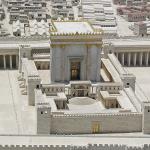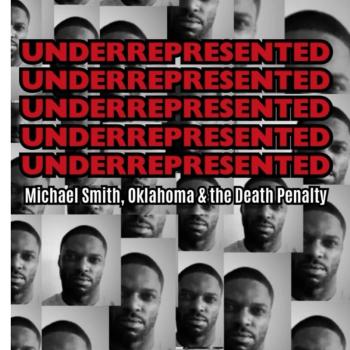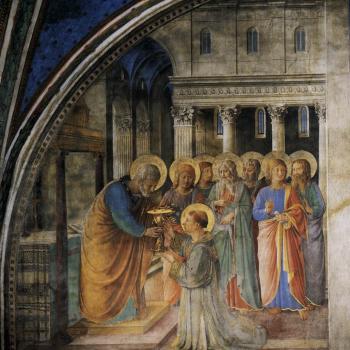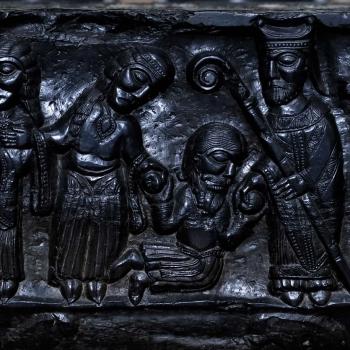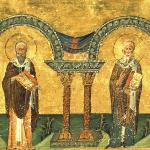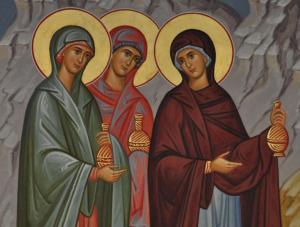
While the various Gospels might give slightly different details, they agree that many of his women disciples, unlike the men, continued to show some faith and trust in Jesus even in his death. St. Albert the Great said that this is why the women were honored by Jesus by making them the first messengers of the resurrection: “Indeed, everyone but his mother doubted, but the women less than the apostles. And for this reason they deserved to be the messengers of the Resurrection first.” [1]
Various traditions suggest that Jesus’ mother, Mary, was the first to witness the resurrected Christ, but this was left out of the Gospels because the Gospel writers thought critics could and would use that fact as a way to challenge the resurrection itself. For example. Someone could have said that Mary, out of grief, imagined it and convinced others to accept her delusion. While that does not seem to be the best argument as to why her meeting with the resurrected Christ was not put into the Gospels, as we could imagine many other reasons, but the fact is, all we have here is a guess. What is important is what happened when the myrrh-bearing women went to the tomb as they, not Jesus’ mother, were first given the task to preach about Christ’s resurrection from the dead.
Matthew tells us two women went to Jesus’s tomb: “Now after the sabbath, toward the dawn of the first day of the week, Mary Magdalene and the other Mary went to see the sepulchre” (Matt. 28:1 RSV). Mark, on the other hand, tells us that there were three: “And when the sabbath was past, Mary Magdalene, and Mary the mother of James, and Salome, bought spices, so that they might go and anoint him” (Mk. 16:1 RSV). There are ways to reconcile these narratives, either by suggesting there could have been many more women involved and what we are being told is the name of some of them (the most important involved), or by suggesting there could be multiple events being related. Exploring such possibilities are best left elsewhere, as our interest here is that the Gospels indicate women were the first witnesses of the resurrected Jesus, and it was women who were first told to preach the good news of the resurrection itself:
And looking up, they saw that the stone was rolled back; — it was very large. And entering the tomb, they saw a young man sitting on the right side, dressed in a white robe; and they were amazed. And he said to them, “Do not be amazed; you seek Jesus of Nazareth, who was crucified. He has risen, he is not here; see the place where they laid him. But go, tell his disciples and Peter that he is going before you to Galilee; there you will see him, as he told you” (Mk. 16:4-7 RSV).
Mark famously leaves us with the empty tomb, using that to signify the resurrection, while Matthew indicated that as the women also encountered the resurrected Christ, who also told them to go and tell others what they had seen:
And behold, Jesus met them and said, “Hail!” And they came up and took hold of his feet and worshiped him. Then Jesus said to them, “Do not be afraid; go and tell my brethren to go to Galilee, and there they will see me.” (Matt 28:9-10 RSV).
The women did not go expecting to see the resurrected Christ. That was more than had ever crossed their minds. They, like the men, still were in shock, but despite that shock, their inner strength and resilience was proven by the way they went to Christ’s tomb. They still had some faith. Despite what happened, they believed Jesus was worthy of their honor and veneration and that God had done something remarkable in and through him. Thus, it was their faith which led them to be with Jesus, to encounter the resurrected Christ, and to be commissioned to be the first to preach about the resurrection of the dead. Sadly, this is something Christians easily forgot as over time they undermined women’s voices, saying women should not speak in such a way. Here, we see that Jesus affirmed their right to speak, their right, indeed to preach. Fr. Gerald O’Collins said that, if we look carefully, especially in Matthew’s Gospel, we would find a pattern emerging where Jesus actively sought to include women in his ministry, a pattern which is especially made clear in this account of the myrrh-bearing women, providing the framework Christians should have followed when dealing with gender in the Christian tradition:
Thus a large pattern links the concluding chapters from Matthew. It speaks of the power and life of God, who protects and vindicates not only his Son but also the two women who represent faithful discipleship. This pattern at the end of Matthew’s Gospel recalls something similar at the beginning – an example of inclusion. [2]
Women, not men, first represented faithful discipleship. Women were sent out to the world to preach the good news, to serve as the first witnesses of the resurrection; they were the “apostles to the apostles.” Sadly, this was quickly forgotten, and Christians began the process of taking away from women the voice which Christ had granted them. Women slowly found their place in the church became as marginalized as it was in society at large. There would be no place for the myrrh-bearing women if those who thought women should always be silent in all matters had their way. Jesus gave women power and authority, and we, therefore, should make sure it is restored, as it has consistently been taken away from them throughout history. Christians are meant to be inclusive: in Christ Jesus there is no room for discrimination, as in him, there is neither male nor female, Jews or Gentile. All those who are baptized into him and are given his name with chrismation (confirmation); through the Spirit given to them, through their inclusion into the body of Christ, they are enabled to speak and preach and share the good news to the world. We should not once again shame St. Mary Magdalene, or those women who follow her, and force them to be silent, for then we, and not them, should be ashamed when we do so. We should learn from Jesus, learn from the inclusivity of Jesus, and work to make sure that inclusivity is fully realized.
[1] St. Albert the Great, On Resurrection. Trans. Irven M. Resnick and Franklin T. Harkins (Washington, DC: CUA Press, 2020), 133.
[2] Gerald O’Collins, SJ, Easter Faith (New York: Paulist Press, 2003), 91.
Stay in touch! Like A Little Bit of Nothing on Facebook.
If you liked what you read, please consider sharing it with your friends and family!
N.B.: While I read comments to moderate them, I rarely respond to them. If I don’t respond to your comment directly, don’t assume I am unthankful for it. I appreciate it. But I want readers to feel free to ask questions, and hopefully, dialogue with each other. I have shared what I wanted to say, though some responses will get a brief reply by me, or, if I find it interesting and something I can engage fully, as the foundation for another post. I have had many posts inspired or improved upon thanks to my readers.


